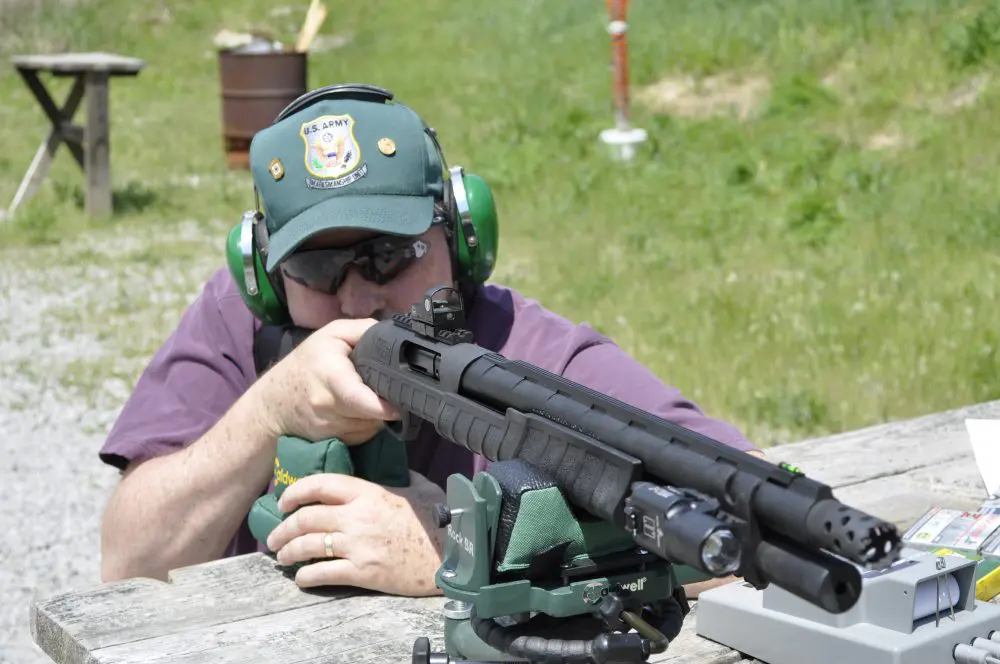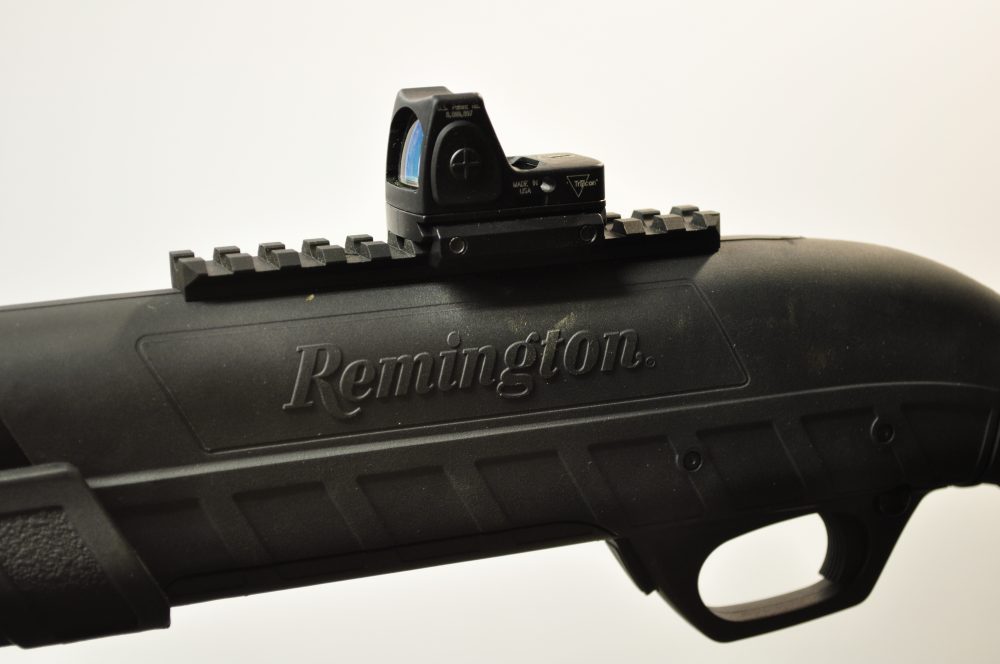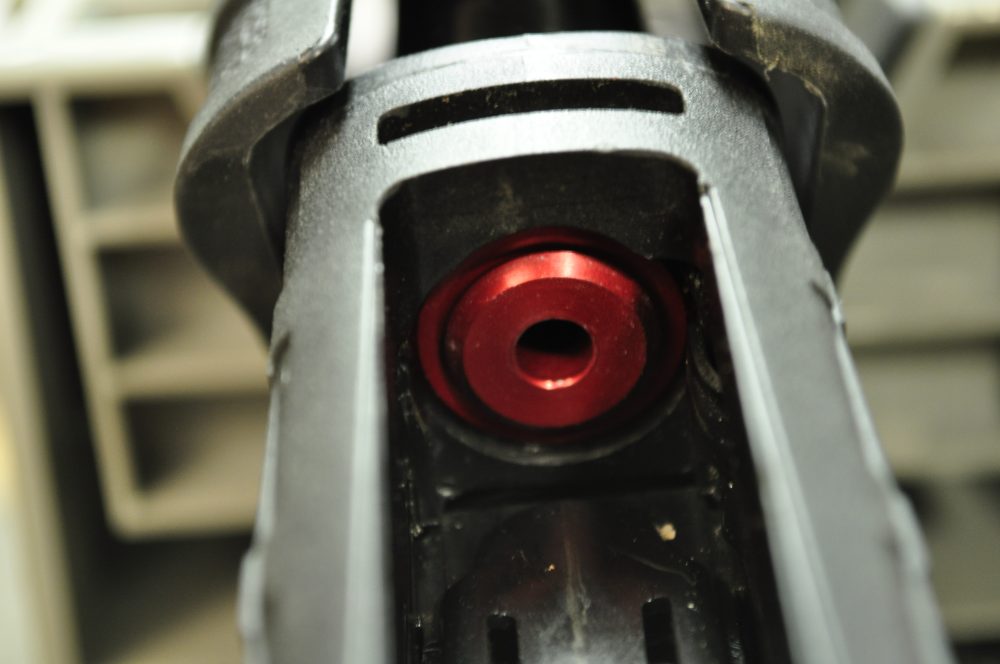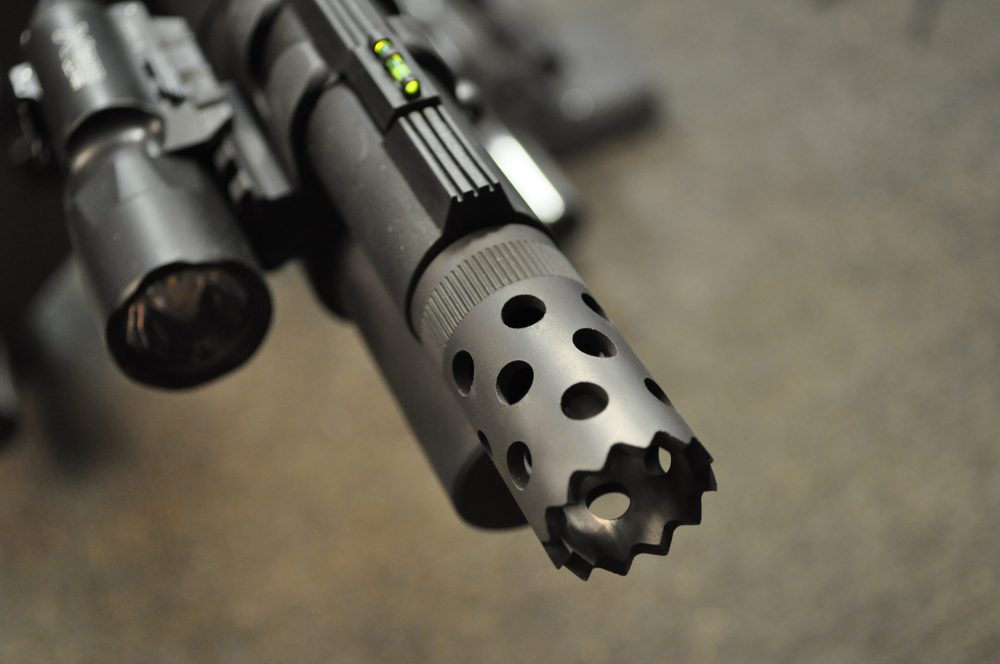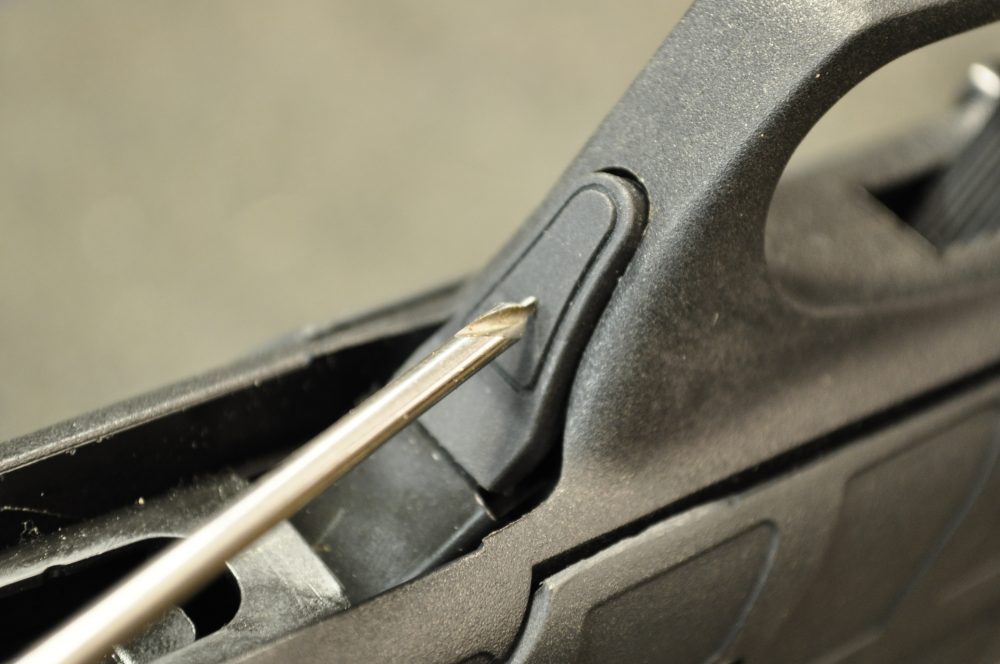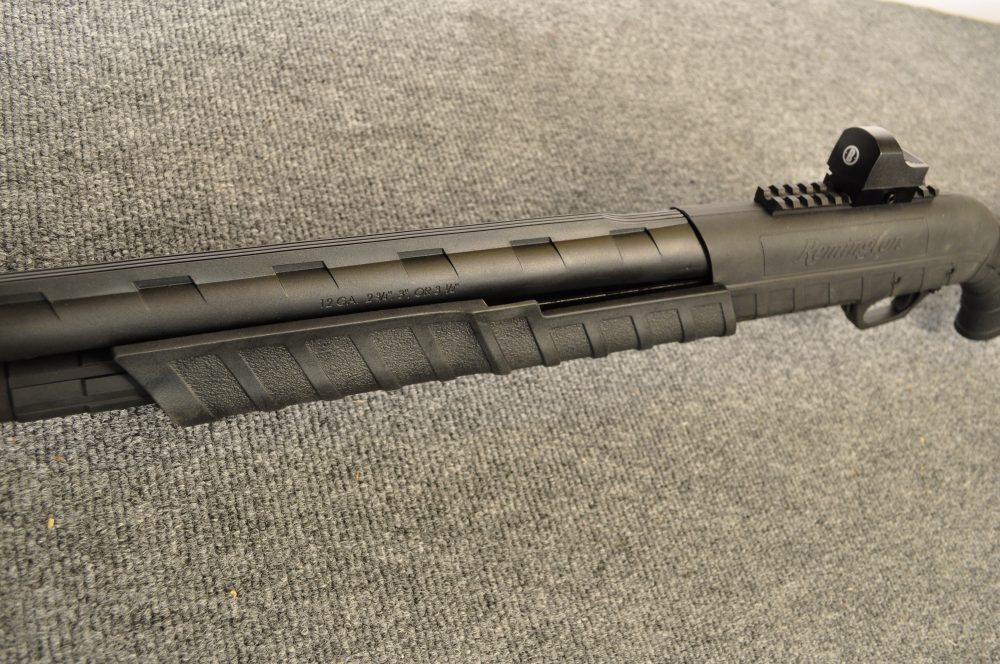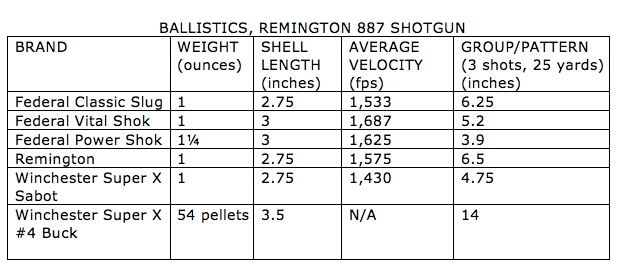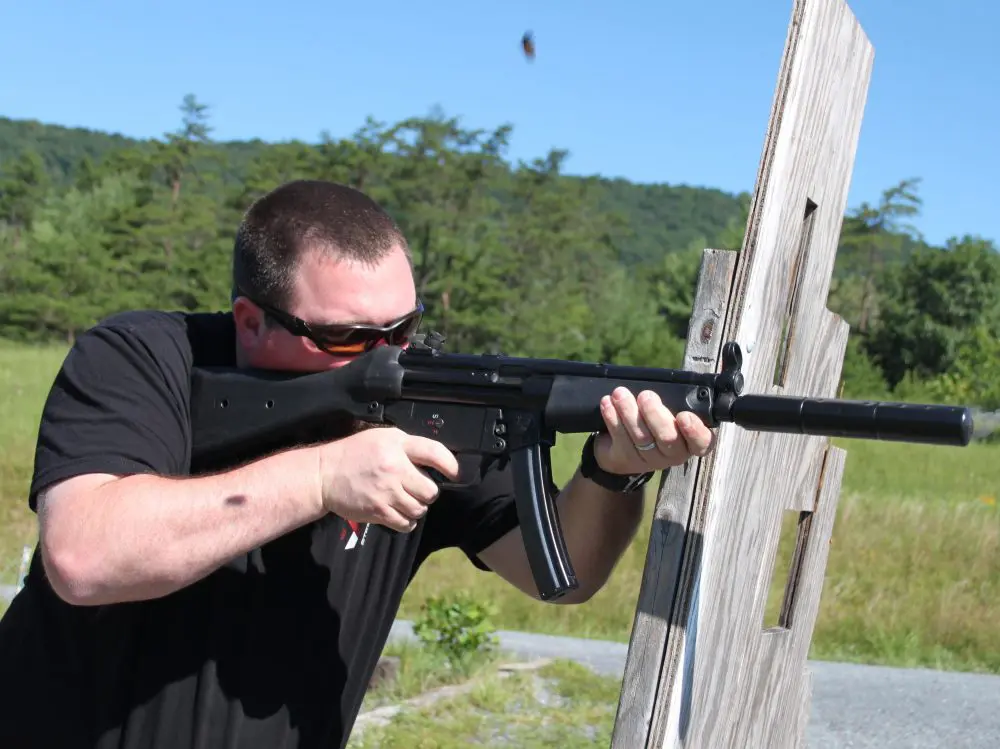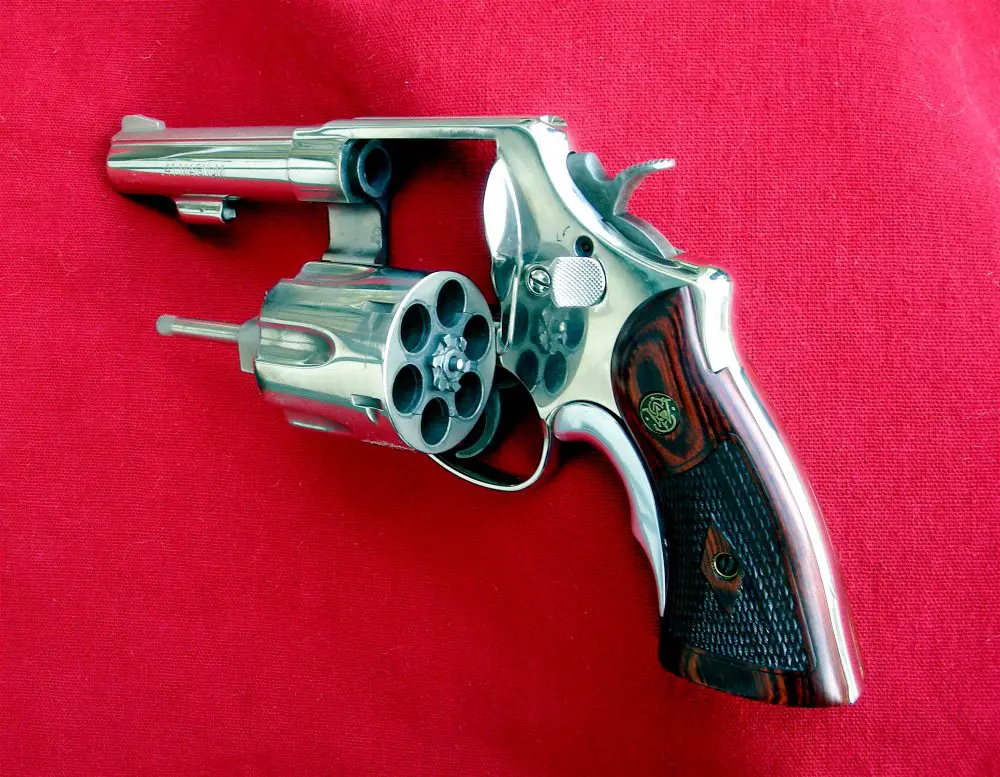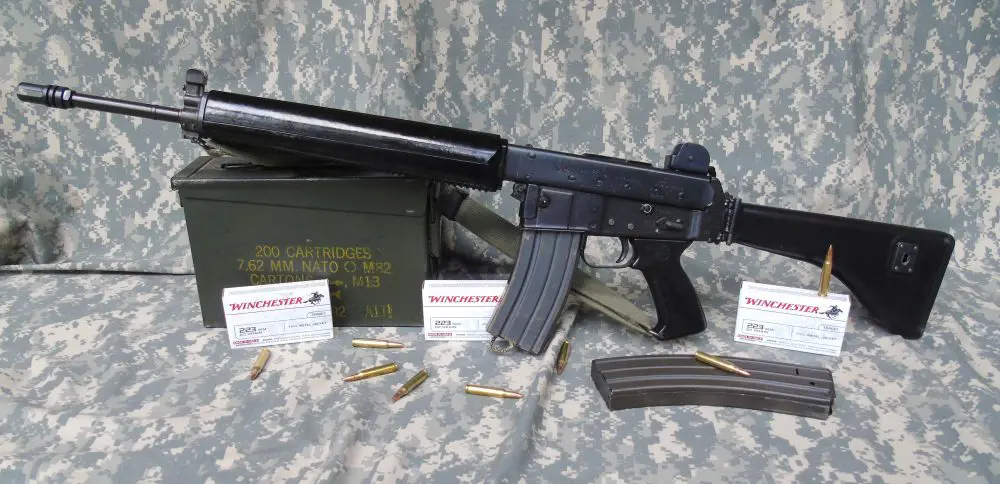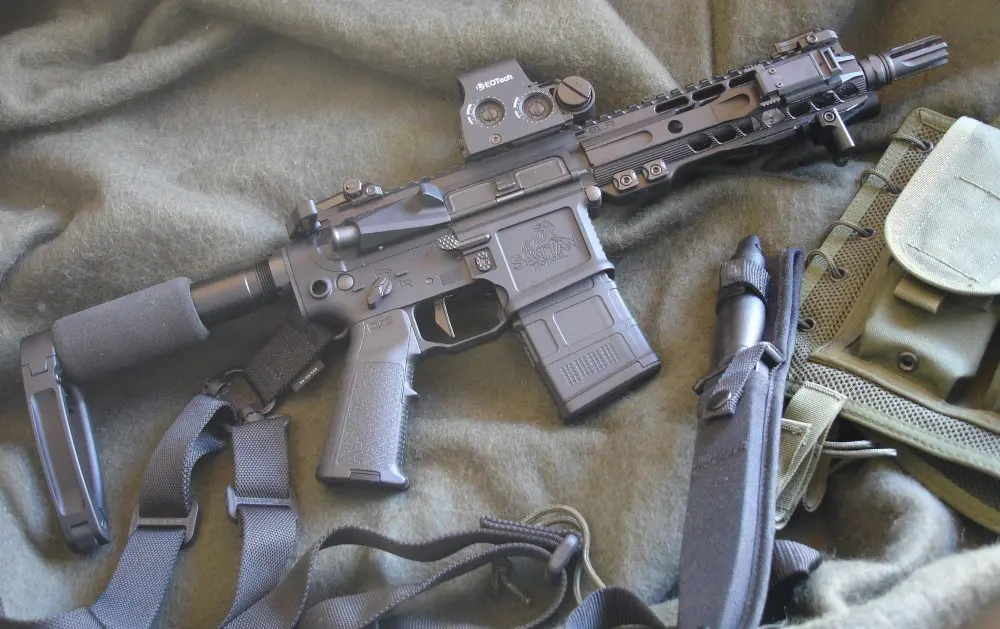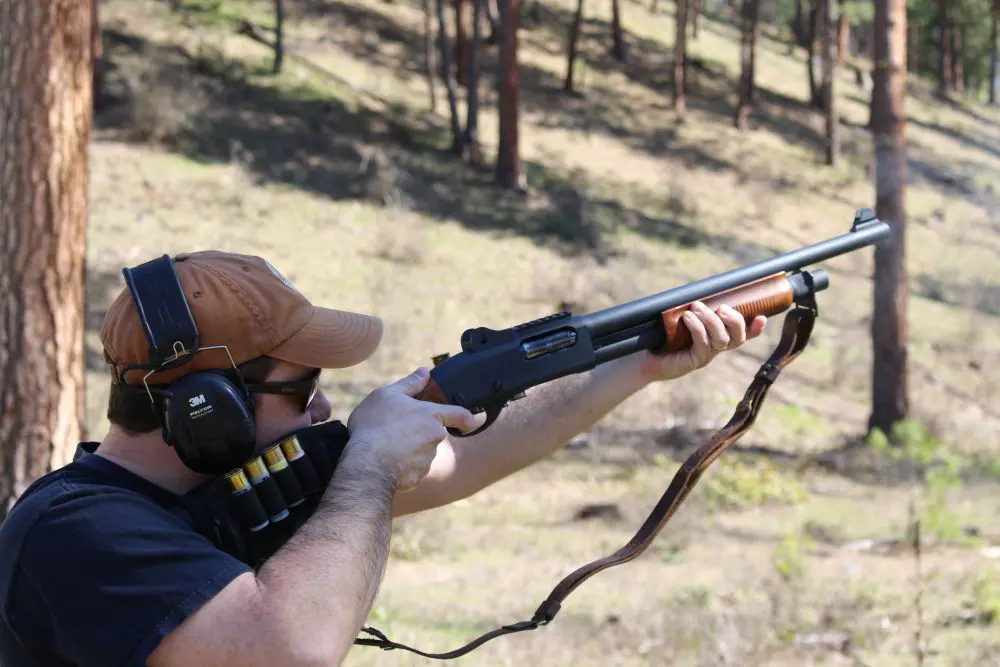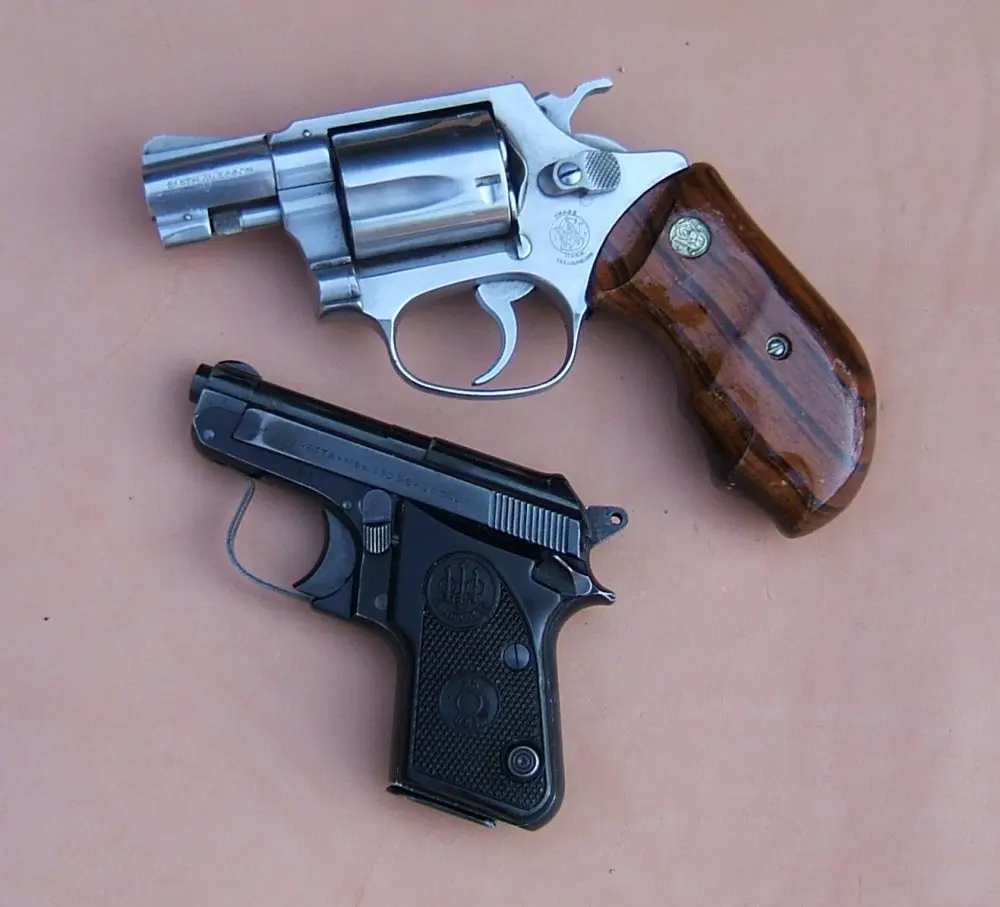When I received the Remington Model 887 and opened the box, the first words out of my mouth were, “This gun is a beast,” and the name stuck. The Remington 887 is an upgraded version of the venerable 870 and borrows heavily from that gun, but is not designed to replace it.
Sieberts shoots 887 for accuracy with slugs, with Bushnell First Strike sight mounted.
Table of Contents
MANUFACTURING PROCESS
Starting with the stamped and welded receiver, the ArmorLokt finish, which is actually nylon- and glass-filled polymer, is applied to the exterior surfaces of the receiver and barrel in an injection-molding process. The thickness of the coating applied is about .040 of an inch. This is a fairly thick coating and is the reason Remington can claim the shotgun is virtually impervious to the elements and much more resistant to the dings and scratches of hard use.
Shooters might worry that the coating can separate from the gun. Remington engineers have subjected the coating to over 10,000 rounds of constant firing in all weather conditions and feel the coating is not only impervious to the elements but also can withstand the rigors of extremely hard use without separating from the steel underneath.
I talked to one of the gun’s former project developers, who no longer works for the company, and he told me he personally tested the 887 in real-world conditions from Alaska to South America, and it stood up to everything.
This is not Remington’s first attempt at polymer firearms. Shooters of a certain age will remember Remington used polymer construction in its firearms with the Nylon 66 rimfire rifle that was introduced in 1959.
Kyle Sieberts shoots 887. Ejected shell is visible, and cloud of dust rising from the backstop from 3-inch slug loads.
887 TACTICAL VERSION SPECS
The 887 I received was the Tactical version, chambered for 2¾-, 3- and 3½-inch shells. The gun features a Picatinny rail secured with three screws to the top of the receiver for mounting various types of sights, as well as another small section of rail for mounting lights and other accessories. This second section of rail is attached with a single set screw to the magazine tube bracket on the right side of the gun.
The shotgun’s 18.5-inch barrel also features a solid sighting rib with small grooves running down its length and culminating in a Hi-Viz fiber optic front sight. The end of the barrel is internally threaded in order to attach the included muzzle stand-off. This is essential when using the shotgun to blow door locks and door hinges when breaching a room. The stand-off has teeth milled into the end of the edge in order to provide “bite” when pressing the muzzle up against a solid door to prevent slipping.
Trijicon RMR sight mounted on Remington 887
Without a stand-off, the operator risks blowing the end of the muzzle off if he presses it directly against the door or lock, since the build-up of gas behind the shot column or slug provides nowhere for the gas to go. This is why the stand-off has holes drilled into the side. It lets gas escape while the shot column is exiting the barrel’s muzzle. It also acts as a muzzle brake when shooting normally. Remington calls it a “tactical ported choke.”
The gun’s forend is longer and wider than a stock 870 forend, but the width, combined with the addition of the ArmorLokt coating, gives the gun a very solid feel and heft and should work great with gloves or under wet conditions. The Tactical model has an extended magazine tube that holds five rounds of 3½-inch shells, six rounds of 3-inch shells, or seven rounds of 2¾-inch shells. The bright red anodized shell follower is easy to see, and designed so it’s easy to feel the difference between it and a shell in low light.
Bright red anodized shell follower was easy to see and feel.
870 AND 887 DIFFERENCES
The bolt is a dual rotary, where the bolt’s twin locking lugs rotate and lock into the corresponding recesses machined into the barrel extension. This is where the 887 differs from its cousin the 870, which has a single locking block separate from the bolt head and that cams up into the locking recess of the barrel extension.
The 887 has a hood that shields the bolt and covers up the rear of the shell port when the action is closed. This keeps dirt and foreign objects out of the action.
The claw-type extractor exerts quite a bit of bite to pull out those larger Magnum shells. The ejector is mounted in a narrow groove in the interior of the receiver wall. Contacting the spring-loaded ejector kicked the empties out with force.
Remington’s tactical ported choke
One of the main differences mechanically between the 887 and the 870 is the location of the slide release. The latch on the 870 is a small tab located on the front left side of the trigger guard. On the 887, the slide release is located in the center of the trigger guard and is a large button, making it easier to manipulate with cold fingers or gloves.
The shell latches are another difference between the 887 and the 870. On the 870, the shell latches are staked into corresponding grooves in the receiver. Once you have taken the shotgun apart and reassembled it enough, the shell latches will pop out and need to be restaked into place. Brownell’s makes a handy staking tool for this purpose. On the 887, both shell latches are integral with the trigger group.
SIGHTS AND LIGHTS
For this evaluation, I decided to try two different red dot sights and a tactical light. Some people like red dot sights and some don’t. I thought it would make a better evaluation if I included them and let readers decide for themselves.
Slide release is a large button that was moved to the center of the trigger guard in the front, permitting ambidextrous operation.
Bushnell First Strike
The Bushnell First Strike is a reflex-type red dot sight that measures approximately 2×2 inches and weighs 2.1 ounces, so it’s very small and compact. It’s powered by a 3v CR 2032 lithium battery and is unique in that the sight has a photovoltaic cell mounted in front of the sight body that serves as the on-off switch. Placing the included hood on the sight turns it into an auto shutoff. The battery can be expected to last about 50,000 hours of runtime based on normal light varying conditions.
The sight has a 5 MOA dot that is self-regulating for brightness through the photocell. It’s completely waterproof, shockproof and fogproof. This sight can also be mounted on AR-type rifles with an additional hi-rise base.
Windage and elevation adjustments are made with a small screwdriver that is included. The sight mounts to any Weaver or Picatinny rail with a single Allen-head screw. One hash mark of the adjustment screw moves the strike 1.5 inches at 25 yards, and the sight has 240 MOA of adjustment.
I mounted the sight and, after a quick zero, proceeded to fire a series of slugs at 25 yards. The sight worked flawlessly and has a bright, easy-to-pick-up red dot. I like dot sights for the speed and precision they offer. The Bushnell First Strike sight mounted easily and solidly and worked perfectly.
ArmorLokt coating makes a thick, no-nonsense finish.
Trijicon RMR
The other sight I tested was the Trijicon RMR, which stands for Ruggedized Miniature Reflex sight. Its 3.25 MOA dot is adjustable for brightness with buttons located on each side of the sight body. Each click of the windage and elevation adjustment screw equals 1 MOA. The sight mounted easily to the receiver rail of the 887 with dual mounting screws. The size of the RMR is about 1×2 inches and the unit weighs about an ounce.
The brightness setting on the RMR has two modes—automatic and eight adjustable settings. The unit is activated by pressing one of the brightness buttons and is turned off by pressing both brightness adjustment buttons at the same time for three seconds. If you press both buttons for less than three seconds, the unit enters automatic brightness mode.
Trijicon claims a four-year battery life under continuous use at brightness setting number four. When left on at the brightest setting (number eight), the battery will last around 25 days.
Mounting this sight was just as easy as the Bushnell and, after a quick zero, I performed accuracy tests with it. The Trijicon sight was very fast to pick up, sight adjustments were easy to do in the field with a coin or similar tool, and the small size makes for a very compact and effective red dot sight.
Both of the tested sights are outstanding paired up with the 887.
SureFire X-300 Ultra
The last item I attached to the shotgun was one I think any good defensive shotgun should have—a good white light. A quick call to the folks at SureFire and one of their excellent X-300 Ultra sights was at my door to include in this evaluation. The X-300 is suitable for handguns and long guns, and has both a momentary pressure switch and a constant on-off switch located at the back of the unit. Grip switches for pistols and tape switches for long guns are also available.
The X-300 Ultra light offers 500 lumens of brightness and has a tactical runtime of 1.5 hours. It weighs about four ounces with batteries and is 3.5 inches long. The light comes supplied with a mounting kit for Universal rails and Picatinny rails. I installed the Picatinny rail kit onto the light and mounted it to the rail section on the 887.
The X-300 is small and compact, rugged as hell, and throws out a lot of light. The lens puts out a tightly focused beam and still has excellent fill characteristics for peripheral lighting.
HITTIN’ THE RANGE
Once everything was installed and I was at the range, I set up an Oehler 35P chronograph and went to work. I had procured several different types and brands of ammunition, including three types of Federal ammo, two types of Winchester, and one type of Remington. Chronograph results were pretty close to the numbers stated on the boxes of the respective brands.
In addition to the slugs, I evaluated Winchester #4 buckshot in the 3½-inch Magnum load. I think #4 buck is an excellent choice where lethality and low penetration are desired, with 54 24-caliber pellets launched at about 1,200 fps from the 3½-inch shell. At close range, say 10 to 20 yards, it can be devastating without overpenetrating. I got patterns of about 10 inches at 15 yards with the Winchester #4 buckshot load.
The slug loads all performed very well in the accuracy department, with the Federal Power Shok load edging out the Winchester and Remington offerings.
My son, Kyle, also test fired the Nitro Mag Tactical 887, and I brought out a stock Remington 11-87 to let him compare the pump action with a semi-auto. After starting out with some soft #7 target loads and working up to 2¾-inch buckshot and then to slugs, he put about 25 to 30 rounds downrange, enough to get a good feel with both guns.
Kyle liked the 887 over the 11-87 due to the overall balance and pointability of the shotgun. The extra weight of the 887, along with the muzzle brake, also tended to help with recoil and recovery.
After shooting the Remington Model 887 Nitro Mag Tactical shotgun over the course of a few weeks and putting a wide variety of brands and types of rounds through the gun, I can say that I think Remington has really knocked it out of the park with this one.
It’s a lot of fun to shoot, rugged as a Sherman tank, and more than earns the nickname “The Beast.” If you aren’t already familiar with it, check out the Remington 887.
I wish to express my thanks to the Blue Grass Sportsmen’s League for the use of their range for this evaluation.
SOURCES:
Remington Arms Company, LLC
(800) 243-9700
www.remington.com
Blue Grass Sportsmen’s League
(859) 858-4060
www.bgslinc.com
Brownells Inc.
(800) 741-0015
www.brownells.com
Bushnell Outdoor Products
(800) 423-3537
www.bushnell.com
Federal Premium Ammunition
(800) 379-1732
www.federalpremium.com
SureFire, LLC
(800) 828-8809
www.surefire.com
Trijicon
(800) 338-0563
www.trijicon.com
Winchester Ammunition
(615) 258-3340
www.winchester.com
